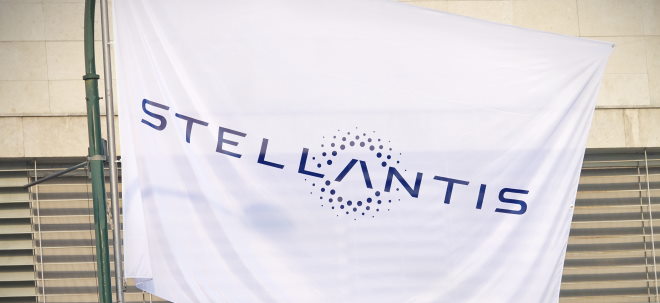Defense IT Spending Market to Grow by USD 26.01 Billion (2025-2029), Driven by Autonomous Systems Development, AI's Impact on Market Trends - Technavio
NEW YORK, Jan. 21, 2025 /PRNewswire/ -- Report on how AI is redefining market landscape - The global defense IT spending market size is estimated to grow by USD 26.01 billion from 2025-2029, according to Technavio. The market is estimated to grow at a CAGR of 4.7% during the forecast period. Development of autonomous systems is driving market growth, with a trend towards adoption of artificial intelligence (AI) and machine learning (ML). However, issues related to digital sovereignty poses a challenge. Key market players include Accenture PLC, Amazon.com Inc., BAE Systems Plc, CRON AI, Cubic Corp., CyAmast Pty Ltd., Dell Technologies Inc., General Dynamics Corp., Hewlett Packard Enterprise Co., Holo Light GmbH, International Business Machines Corp., Kratos Defense and Security Solutions Inc., Leidos Holdings Inc., ManTech International Corp., Microsoft Corp, Northrop Grumman Corp., Oracle Corp, Palantir Technologies Inc., Pennant International Group PLC, and Science Applications International Corp. Inc.
AI-Powered Market Evolution Insights. Our comprehensive market report ready with the latest trends, growth opportunities, and strategic analysis- View Free Sample Report PDF
Defense IT Spending Market Scope | |
Report Coverage | Details |
Forecast period | 2025-2029 |
Base Year | 2024 |
Historic Data | 2019 - 2023 |
Segment Covered | Type (Service, Software, and Hardware), Application (Cyber security, IT infrastructure, Logistic and asset management, and Others), Geography (North America, APAC, Europe, Middle East and Africa, and South America), and Force. |
Region Covered | North America, APAC, Europe, Middle East and Africa, and South America |
Key companies profiled | Accenture PLC, Amazon.com Inc., BAE Systems Plc, CRON AI, Cubic Corp., CyAmast Pty Ltd., Dell Technologies Inc., General Dynamics Corp., Hewlett Packard Enterprise Co., Holo Light GmbH, International Business Machines Corp., Kratos Defense and Security Solutions Inc., Leidos Holdings Inc., ManTech International Corp., Microsoft Corp, Northrop Grumman Corp., Oracle Corp, Palantir Technologies Inc., Pennant International Group PLC, and Science Applications International Corp. Inc |
Key Market Trends Fueling Growth
Defense IT spending continues to grow as Defense Forces and Homeland Security agencies prioritize modernization of their IT systems. Key areas of focus include Cybersecurity to protect against cyberattacks on National defense data, Communication Systems for secure communications, and Intelligence Technologies for data analytics and decision-making. IT Infrastructure, Cloud Computing, and Software solutions are essential for Defense operations. Geopolitical Tensions fuel the demand for advanced Military Capabilities, driving IT Spending on hardware like Unmanned Systems, Smart weapons, and Sensor systems. Government Policies and Defense Modernization initiatives are accelerating the adoption of cutting-edge technologies such as 5G, Artificial Intelligence, Autonomous systems, and Digital Transformation. IT Solutions in Healthcare, VR/AR technology, and Flight simulators are also gaining importance. Defense IT systems require IT Infrastructure, including Network centric environments, Battlefield management systems, and Decision science platforms. IoT analytics, Actuators, Control systems, and Military infrastructures are also crucial components of Defense IT spending. Overall, Defense IT spending is a significant market, driven by the need for advanced IT technologies to enhance Military capabilities and respond to emerging threats.
The global defense IT spending market is witnessing significant growth in the adoption of artificial intelligence (AI) and machine learning (ML) technologies. These advanced technologies are increasingly being recognized by governments and defense organizations for their potential to enhance military capabilities, improve decision-making processes, and bolster national security. One key area of application is the development of autonomous systems, such as robotic systems, unmanned vehicles, and drones, which can be powered by AI and ML algorithms. These systems can perform critical military duties, including target detection, surveillance, reconnaissance, and combat operations, without human intervention. This not only reduces the risk to human life but also increases operational efficiency. Additionally, AI and ML can analyze vast amounts of data quickly and accurately, providing valuable insights for strategic planning and tactical decision-making. Overall, the integration of AI and ML in defense IT spending is a game-changer, offering significant benefits in terms of enhanced military capabilities, improved decision-making, and increased operational efficiency.
Insights on how AI is driving innovation, efficiency, and market growth- Request Sample!
Market Challenges- Defense IT spending continues to grow as Defense Forces, Homeland Security, and Paramilitary Forces invest in advanced IT solutions to enhance their capabilities. Challenges include securing national defense data from cyberattacks, ensuring secure communications, and upgrading defense IT infrastructure. Defense IT systems require the latest software, hardware, and services to support military operations and decision-making in a network centric environment. Cybersecurity, communication systems, intelligence technologies, and IT infrastructure are top priorities. Cloud computing, data analytics, and digital transformation are driving innovation in defense IT, with 5G, artificial intelligence, and autonomous systems at the forefront. Geopolitical tensions and military capabilities necessitate continuous IT spending. Defense modernization includes investment in smart weapons, battlefield management, and digital transformation. IT spending covers IT solutions for healthcare, sensors, VR/AR technology, and IoT analytics. Military actions require reliable IT technologies, such as actuators, control systems, and military infrastructures, to execute effectively.
- In today's digital age, defense organizations prioritize data privacy and cybersecurity as critical concerns, given the increasing use of advanced technologies like augmented reality in defense systems. However, the need to maintain digital sovereignty by keeping vital defense data within national borders poses challenges for international defense IT spending. Many defense companies rely on foreign technology providers for their IT systems and infrastructure, which can limit ownership and control over military capabilities and potentially compromise digital sovereignty. Developing domestic defense IT capabilities is essential to maintain digital sovereignty, but it requires a significant investment of time and resources.
Insights into how AI is reshaping industries and driving growth- Download a Sample Report
Segment OverviewThis defense it spending market report extensively covers market segmentation by
- 1.1 Service
- 1.2 Software
- 1.3 Hardware
- 2.1 Cyber security
- 2.2 IT infrastructure
- 2.3 Logistic and asset management
- 2.4 Others
- 3.1 North America
- 3.2 APAC
- 3.3 Europe
- 3.4 Middle East and Africa
- 3.5 South America
1.1 Service- The global defense IT spending market encompasses various service segments catering to the unique needs of defense organizations worldwide. These segments include Consulting Services, Systems Integration, Application Development and Maintenance, Managed Services, Cybersecurity Services, Training and Support Services, and Data Analytics Services. Consulting Services offer counsel and direction on digital transformation, cybersecurity, data analytics, and technology adoption. Systems Integration ensures seamless communication and interoperability by integrating different defense IT systems, tools, and software. Application Development and Maintenance creates and manages specialized software applications for defense firms. Managed Services contract outsourced IT tasks, providing cost savings, increased productivity, and continuous availability. Cybersecurity Services secure crucial infrastructure and military data through vulnerability assessments, threat intelligence, incident response, security audits, and managed security services. Training and Support Services offer user training, technical support, helpdesk services, system maintenance, and repair services. Data Analytics Services extract valuable insights from data through predictive analytics, machine learning, artificial intelligence, and data visualization tools, enabling informed decisions, pattern identification, anomaly detection, and operational efficiency improvement. These essential service segments enable defense organizations to meet their specific IT requirements, adapt to evolving technology landscapes, and enhance their overall defense capabilities, driving the growth of the defense IT spending market.
Download complimentary Sample Report to gain insights into AI's impact on market dynamics, emerging trends, and future opportunities- including forecast (2025-2029) and historic data (2019 - 2023)
Research AnalysisThe Defense IT Spending market is a significant and continually evolving sector, focusing on supplying advanced technologies to Defense Forces, Civilian Forces, Homeland Security, and other government agencies. This market encompasses various domains, including Cybersecurity to safeguard sensitive information, Communication Systems for secure and reliable data transmission, Intelligence Technologies for data analysis and processing, and IT Infrastructure and scalable systems. Moreover, the market incorporates emerging technologies such as Cloud Computing for flexible and efficient data storage, Data Analytics for actionable insights, and 5G for high-speed connectivity. Additionally, it covers cutting-edge technologies like Artificial Intelligence, Autonomous Systems, Digital Transformation, and Internet of Things (IoT) Analytics to enhance operational efficiency and effectiveness. Furthermore, the Defense IT infrastructure supports advanced capabilities such as Smart weapons, Battlefield management, Network centric environment, Decision science platform, and Healthcare systems. Other essential technologies include Sensors for real-time monitoring, Virtual Reality (VR) and Augmented Reality (AR) technology for training and simulation, and Flight simulators for pilot training.
Market Research OverviewThe Defense IT Spending market is a critical segment of the global IT industry, focusing on providing advanced IT solutions to Defense Forces, Homeland Security, and Paramilitary Forces for enhancing military capabilities and ensuring national security. This market encompasses various IT sectors including Cybersecurity, Communication Systems, Intelligence Technologies, IT Infrastructure, Cloud Computing, Data Analytics, and more. Cybersecurity plays a pivotal role in safeguarding national defense data from cyberattacks. Communication Systems enable secure communications, while Intelligence Technologies offer real-time data analysis for effective decision-making. IT Infrastructure supports Defense operations through reliable hardware and software solutions. Cloud Computing offers scalability and flexibility, while Data Analytics helps in predictive analysis and pattern recognition. The market also includes IT Spending on 5G, Artificial Intelligence, Autonomous Systems, Digital Transformation, and other Cutting edge technologies. Defense IT systems are integral to Military Capabilities, with IT Solutions providing Smart Weapons, Battlefield Management, and Network Centric Environment. The market also covers Decision Science Platforms, Sensor Systems, Actuators, Control Systems, and Military Infrastructures. Geopolitical Tensions and Military Actions necessitate continuous Defense Modernization, driving IT Spending. The market caters to various sectors, including Healthcare, Sensors, VR/AR technology, Flight Simulator, IoT Analytics, and Unmanned Systems. Overall, the Defense IT Spending market is a dynamic and ever-evolving landscape, driven by Government Policies and the integration of advanced IT technologies.
Table of Contents:1 Executive Summary
2 Market Landscape
3 Market Sizing
4 Historic Market Size
5 Five Forces Analysis
6 Market Segmentation
- Type
- Service
- Software
- Hardware
- Application
- Cyber Security
- IT Infrastructure
- Logistic And Asset Management
- Others
- Geography
- North America
- APAC
- Europe
- Middle East And Africa
- South America
- Force
7 Customer Landscape
8 Geographic Landscape
9 Drivers, Challenges, and Trends
10 Company Landscape
11 Company Analysis
12 Appendix
Technavio is a leading global technology research and advisory company. Their research and analysis focuses on emerging market trends and provides actionable insights to help businesses identify market opportunities and develop effective strategies to optimize their market positions.
With over 500 specialized analysts, Technavio's report library consists of more than 17,000 reports and counting, covering 800 technologies, spanning across 50 countries. Their client base consists of enterprises of all sizes, including more than 100 Fortune 500 companies. This growing client base relies on Technavio's comprehensive coverage, extensive research, and actionable market insights to identify opportunities in existing and potential markets and assess their competitive positions within changing market scenarios.
ContactsTechnavio Research
Jesse Maida
Media & Marketing Executive
US: +1 844 364 1100
UK: +44 203 893 3200
Email: media@technavio.com
Website: www.technavio.com/
![]() View original content to download multimedia:https://www.prnewswire.com/news-releases/defense-it-spending-market-to-grow-by-usd-26-01-billion-2025-2029-driven-by-autonomous-systems-development-ais-impact-on-market-trends---technavio-302355358.html
View original content to download multimedia:https://www.prnewswire.com/news-releases/defense-it-spending-market-to-grow-by-usd-26-01-billion-2025-2029-driven-by-autonomous-systems-development-ais-impact-on-market-trends---technavio-302355358.html
SOURCE Technavio



